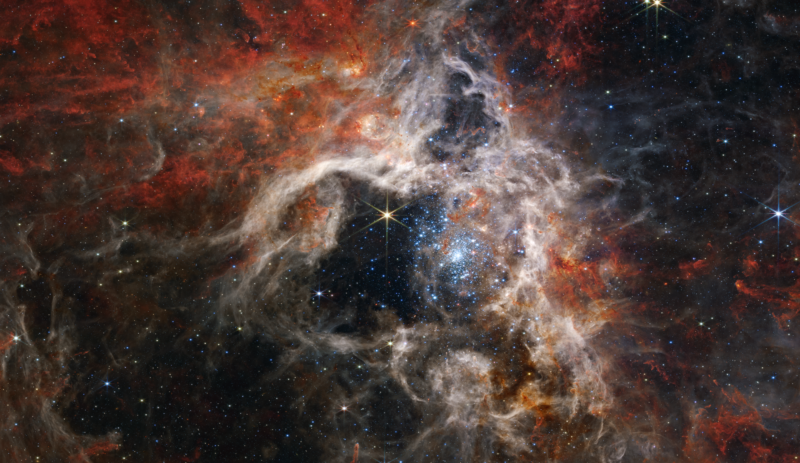Astounding new Webb image reveals tens of thousands of young stars

Enlarge / Webb's Near-Infrared Camera displays the Tarantula Nebula star-forming region in a new light. (credit: NASA, ESA, CSA, STScI, Webb ERO Production Team)
NASA's James Webb Space Telescope continues to provide astronomers with unprecedented views of the Universe.
On Tuesday, the space agency released a mosaic image that shows a panorama of star formation stretching across a staggering 340 light years. Astronomers call the main feature in this image 30 Doradus, but it has a catchier nickname-the Tarantula Nebula-due to its long, dusty filaments.
This stellar nursery is located in the Large Magellanic Cloud, one of the closest galaxies to our own Milky Way at a distance of 160,000 light years. The Tarantula Nebula was already a pretty spectacular feature in telescopes because it's the biggest and brightest stellar nebula in the local neighborhood of galaxies, which includes the Milky Way and Andromeda galaxies.